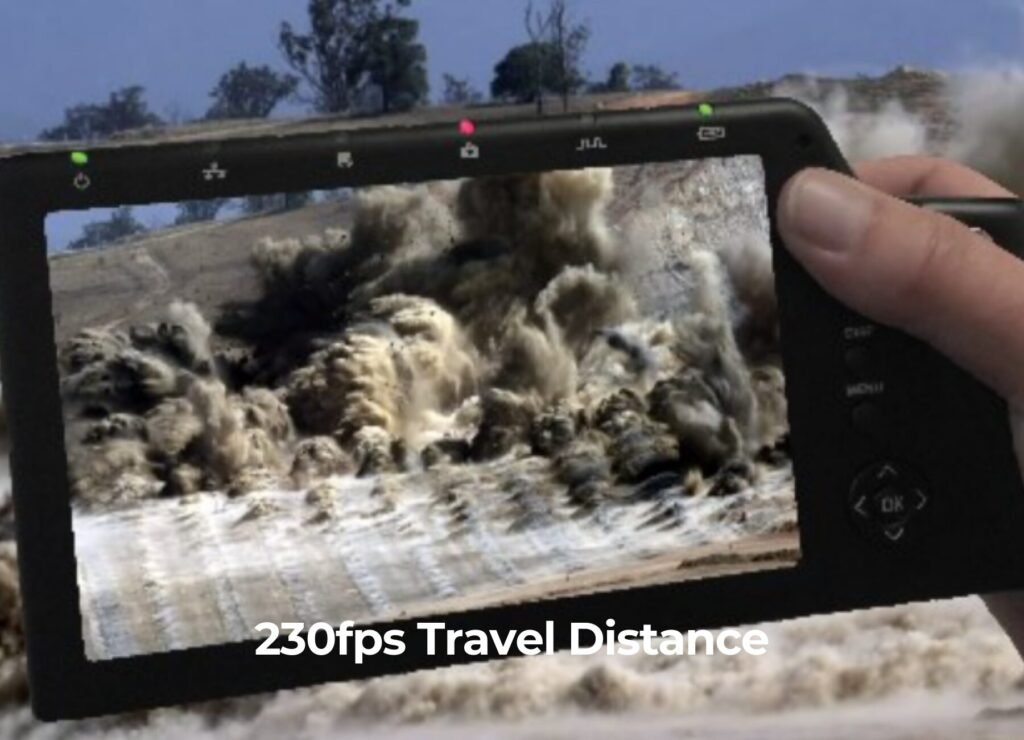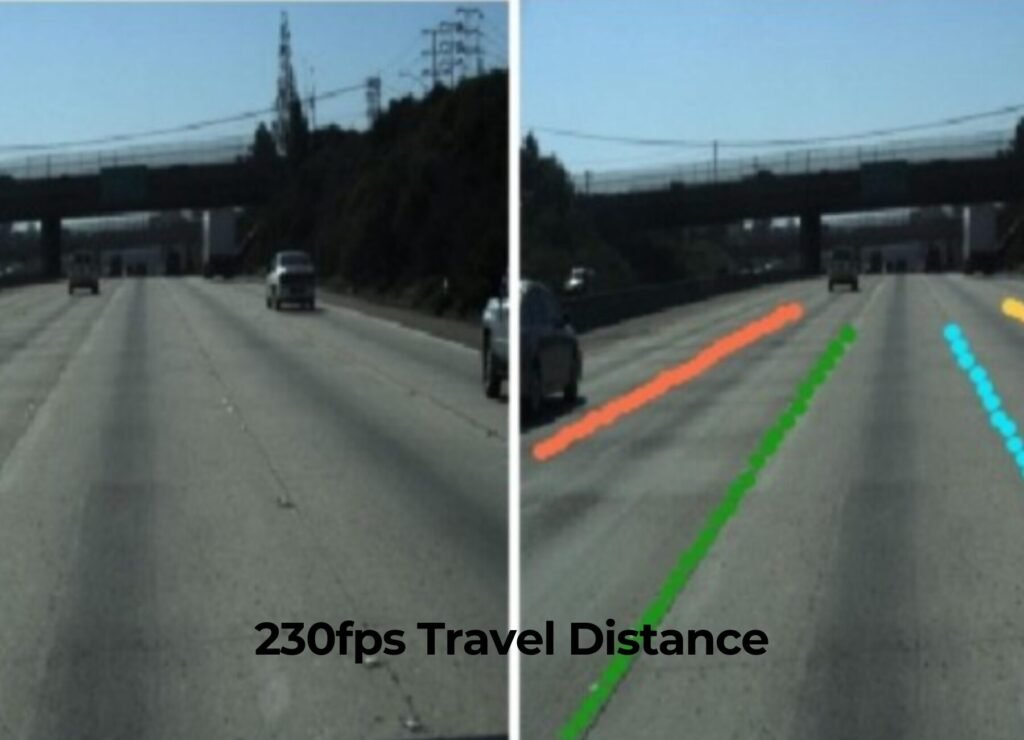Introduction to 230fps Travel Distance
What if travelling time and distance is easier such that a split second can change the travel experience forever? It’s likely to be so with the concept of 230fps travel distance. This fascinating term merges inventive thought and technology and offers an exciting scope for transport fans and adventurists. As we go further on the meaning of 230 frames per second (fps) in terms of distance and time, let’s first try to understand the different contexts that this technology would permit. Don’t have a seat for this one; it’s a wonderful rush!
What is fps and how does it relate to travel distance?
Frames per second, commonly abbreviated as fps, is able to perform a video and animation related function. The higher the fps, in other words, the better image sequences displayed every second of time, the more real movement becomes.
Because any situation in regard to speed should consider how fast an fps can travel, fps usage in this regard can be deemed exclusive. Think of how effective high-speed cameras grabbing at 230fps travel distances are. They allow the intricate motions to be studied in a detailed manner.
What this does is it helps engineers or designers determine the performance figures of the systems precisely. Optimizing the motion of the captured image at this time stamp allows them to optimize transportation system designs with respect to movement speed and safety.
The level of the correlation between fps and travel distance in this sense is further pronounced in cases of rapid modes of transport such as trains or in this example a drone quad copter. There is no limit on how these high speed visuals data can assist the technology through processes of enhancement.
Advancements in Technology: How 230fps travel distance 0.2g bb is Made Possible
The 230fps travel distance would not be possible without emerging technologies. High-definition cameras, sensors, and data processing capabilities have all played a significant role in making 230 fps motion capture possible.
Advances in the practice of optical engineering improved the quality of the lens and helped to get sharp images free of distortions in the first place. This accuracy is very critical to analyzing motion over long distances.
Moreover, many of the raw data are already captured by such algorithms in real time. They help make speed pictures to be conveyed in a whole new meaning by turning how the rapid frames translate.
What’s more, developments in materials science help to create strong and light structures that can also cope with high-speed travel dynamics. These factors assist in improving safety as well as efficiency.
With faster networks such as 5G, communication is in real-time all the time. With such connectivity, there can be real-time feedback from systems aimed at improving the performance of travel at high speeds.
The Advantages of High Speed Travel
High speed travel has been a great source of changing practice for today’s commuters as well as modern day explorers. The most compelling benefit is the reduction of travelling time much significantly. Areas that previously used to be separated in many hours have now been reduced to minutes that enable people to be more productive in one day.
The issue of environmental impact is concerned is also significant. Most of the high-speed transport systems are built so that they use less energy, which decreases the environmental impact and emission of carbon compounds.
The other advantage that cannot be ignored is the convenience of the system. The quality of a ride is improved due to technological advances that lessen disruptions and jerks during the transition.
In addition, economic growth is facilitated by enhanced connectivity. Businesses flourish with improved transport, speed, reliability and new markets that require partnership through different areas.
High speed travel creates a thrill for the potential of new discoveries. This fosters quite random escapades while broadening one’s mind, as locations that were once hard to reach are relatively easy today.
Potential Applications for 230fps Travel Distance
The potential applications for 230fps travel distance are, as miraculously wide as they could be, also incredibly soothing to the wrath that one could witness in an emergency scenario, response vehicles making it to the threat within seconds, cutting down time and potentially saving lives in the process.
In the world of entertainment, consumers would appreciate a different perspective on action scenes, one taken with high-speed cameras. This would advance the art of filmmaking to an extent never experienced before.
Artificial intelligence in transport means high-speed trains could change how people travel. Imagine cutting commuting times from hours to a matter of minutes, whilst also cutting down on stress and increasing how safe the public feels during their commute.
Sports would also benefit as a result of this, perhaps even the most. Advanced systems would be capable of tracking the athletes’ movements at speeds that have never been seen before, revolutionising performance analysis.
Last but not least, e-commerce would also be leading the charge, as fast parcel delivery would become the norm. But would it be a realistic future? Packages travelling across the country in near real-time, customers would go mad for it.

Some Disadvantages of High-Speed Travel at 230fps
Where the high-speed at 230fps travel distance looks to provide numerous benefits, there are some disadvantages. The first problem that comes to mind is the amount of investment required for the infrastructure necessary for such technology advancement.
Building new systems or upgrading the existing ones isn’t an easy feat as it requires a large amount of investment.
Another area of consideration is the level of safety. Speed is deadly and can make accidents commonplace, which means having put in place a comprehensive set of safety procedures and a well communicated emergency procedure.
Regulatory agencies have a steep hill to climb as well: they will need to craft policies appropriate for the new era of travel, covering everything from emissions to the welfare of consumers.
Acceptance by the public is also an essential factor. Although the current generation has never experienced such a high-speed transportation mode, there is still the possibility of apprehension when dealing with an unknown source of transport.
Maintenance can also be quite a challenge. The stress put on the parts of the vehicles while travelling at 230 fps is bound to increase, leading to high repair costs and dubious practicality in the long run.
The Future of Transportation with 230fps Travel Distance
The paradigm of transportation is set to undergo a rapid change with the advent of the 230 fps travel distance. All one has to do is dream of a wonderful world where travel is so easy, and distances do not matter.
Commutes will be transformed with high-speed travel, where daily trips will occur in such a smooth manner that it seemed surreal. Instead of wasting time stranded in a traffic snarl, people will be able to travel to their encroaching destination in minutes.
Just imagine the scope for logistics along with freight services. Enormous distances could be crossed with relative ease, making transporting goods across the globe extremely viable and constructing an almost perfect supply chain.
City planning may change too. There are likely to be fundamental shifts in the layout of cities since high speed transportation will mean that there will be many hi-speed hubs instead of a coordinated high transport network ordinary.
While we rub our minds on these aspects, the aspect of safety needs to be highlighted. Speed induced innovations will be required in order that the safety or the comfort of the travel is never compromised.
This calling inspires collaboration between engineers, city experts, as well as tech experts who are ready to take on the possibilities the new age of transportation offers.
Also Read:”Waxbender Springfield Mo“
Conclusion
Is there a possibility that the future of transportation has finally landed into our palms with the revolutionary concept of traveling 230fps within the distance of a finger? This wonderful breakthrough has created new boundaries of speed and efficiency, ushering in an ever faster age. The growth of technology automatically brings about the expansion of our prospects.
High speed travel not only improves efficiency but also drastically cuts the time taken to complete a journey. Imagine transferring a distance of numerous miles in mere seconds- this can completely alter the picture of distances and time in our day to day lives. There are many potential uses, from transportation of people to movement of goods.
There are, however, challenges as always with any innovation. The need to modify existing infrastructure and add safety features must be addressed first in order to ensure an effective and smooth transition into the existing systems. Overcoming such limitations will require cooperation between sectors and disciplines. Looking forward, however, there is anticipation that tempers concerns about transportation with the ability to travel at 230 fps. This allows many of us to progress toward a narrative of rapid speed that still needs to be materialized.


